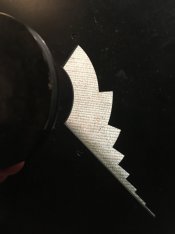ciocc
Member
- Joined
- Apr 19, 2005
- Messages
- 89
- Format
- 35mm
Hello. I came across a photocopy of an old article that appears to have been written some time ago, apparently around the time Tmax film was introduced. It stated that until the "recent" introduction of two Tmax films, it was next to impossible to make direct in-camera color separations with roll film, because of the different development times required for the RGB negatives. With the introduction of the two Tmax films, it was now possible to do so, because the two Tmax films have a special property of developing to the same contrast index for a given development time when exposing the film through the RGB separation filters. The article goes on to explain a process for making in-camera separations on roll film with Tmax and two films are mentioned: Tmax 100 and 3200. There's no mention of Tmax 400.
Does anyone know if Tmax 400 also shares that property? When I look at the Tmax tech pub, there's no specific mention of that property, but there's some language that suggests the property, but that language is only associated with Tmax 100.
I'm probably going to have to test it myself, but thought I'd ask. I had no idea that Tmax 100/3200 had that property. If Tmax 400 also shares that property, it will make my project considerably easier.
Thanks.
Does anyone know if Tmax 400 also shares that property? When I look at the Tmax tech pub, there's no specific mention of that property, but there's some language that suggests the property, but that language is only associated with Tmax 100.
I'm probably going to have to test it myself, but thought I'd ask. I had no idea that Tmax 100/3200 had that property. If Tmax 400 also shares that property, it will make my project considerably easier.
Thanks.







